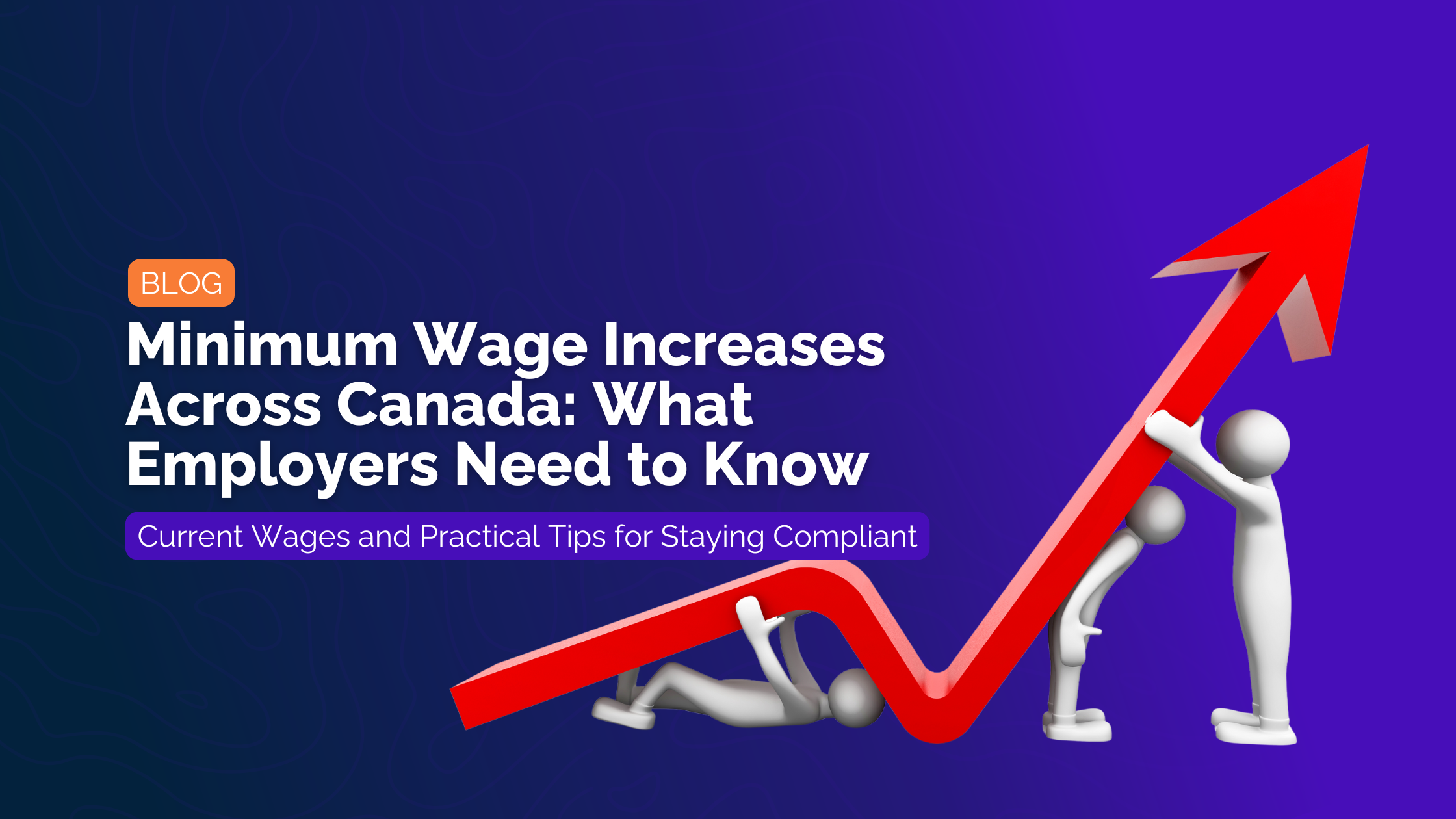Starting October 1, 2025, five provinces and two territories — Ontario, Manitoba, Nova Scotia, Nunavut, Prince Edward Island, Saskatchewan, and Northwest Territories — officially increased their minimum wage rates.
For business owners, these changes aren’t just numbers on paper. Minimum wage increases can have a ripple effect on payroll budgets, employment contracts, job postings, and even team morale. Understanding your obligations — and preparing in advance — is key to staying compliant and managing costs.
Why Minimum Wage Increases Happen
Minimum wage rates are set by provincial or territorial governments and are meant to ensure fair compensation for workers. Adjustments are usually tied to:
- Inflation: Ontario, for example, links annual increases to the Consumer Price Index.
- Advisory board reviews: Provinces like Prince Edward Island rely on Employment Standards Boards.
- Cost of living pressures: Higher food, rent, and energy costs push governments to raise wages to protect workers.
While these increases benefit employees, they can also affect small businesses, especially those with tight margins.
Recent Minimum Wage Changes
Ontario
- New rate: $17.60/hour (up from $17.20).
- Tied to inflation under the Employment Standards Act.
- Impact: A full-time employee (40 hours/week) will see about $835 more annually.
- Special rates:
- Students under 18: $16.60/hour
- Homeworkers: $19.35/hour
- Hunting, fishing & wilderness guides: $88.05/day (<5 hrs) or $176.15/day (5+ hrs)
- Ontario now holds the fourth-highest minimum wage in Canada.
Prince Edward Island
- New rate: $16.50/hour (up from $16.00), which has been in effect since October 1, 2025.
- Reviewed annually by the Employment Standards Board.
- Next scheduled increase: $17.00/hour on April 1, 2026.
Manitoba
- New rate: $16.00/hour, which has been in effect since October 1, 2025.
Nova Scotia
- New rate: $16.50 per hour, which has been in effect since October 1, 2025.
Nunavut
- New rate: $19.75 per hour, which has been in effect since September 1, 2025.
Northwest Territories
- New rate: $16.95/hour, which has been in effect since Sep. 1, 2025.
Saskatchewan
- New rate: $15.35 per hour, which has been in effect since October 1, 2025.
Current Minimum Wages Across Canada (as of October 2025)
- Alberta: $15.00/hour (students: $13.00/hour; salespersons: $598/week; domestic workers: $2,848/month)
- British Columbia: $17.85/hour (with special daily/monthly rates for camp leaders, home support workers, caretakers)
- Federal (interprovincial workers): $17.75/hour
- Manitoba: $16.00/hour
- New Brunswick: $15.65/hour
- Newfoundland and Labrador: $16.00/hour
- Northwest Territories: $16.95/hour
- Nova Scotia: $16.50/hour
- Nunavut: $19.75/hour (highest in Canada)
- Ontario: $17.60/hour (+ special rates)
- Prince Edward Island: $16.50/hour
- Quebec: $16.10/hour
- Saskatchewan: $15.35/hour
- Yukon: $17.94/hour
What This Means for Business Owners
1. Update Payroll and HR Systems
All payroll systems, timesheets, and job postings must reflect the new rates immediately. Even accidental underpayment can lead to penalties.
2. Review Employment Contracts
Ensure that contracts for hourly staff are updated where necessary. Failure to adjust can put you out of compliance with employment standards.
3. Budget for Increased Labour Costs
Higher wages may affect overall payroll expenses, overtime, and benefits contributions. For industries like retail, hospitality, and food services, these increases can be significant.
4. Plan for Wage Compression
Raising entry-level wages can create pressure to raise wages for more experienced staff to maintain fairness and morale.
5. Communicate With Employees
Be transparent about the changes. Employees appreciate clarity — especially if wage adjustments also impact overtime, shift premiums, or benefit eligibility.
Non-Compliance: The Risks
Failing to pay at least the minimum wage is a serious violation under employment standards laws. Penalties may include:
- Back pay orders to compensate employees.
- Administrative fines and penalties.
- Public posting of violations on government websites (a reputational risk).
For example:
- In Ontario, the Ministry of Labour can issue compliance orders and fines up to $100,000 for repeat violations.
- In British Columbia, penalties can include up to $10,000 per infraction, depending on business size and history.
Practical Tips for Staying Compliant
- Double-check payroll records before the first pay cycle in October.
- Train managers and supervisors on the new rates.
- Post updated wage rates in the workplace if required by law.
- Consider efficiency strategies — scheduling, automation, or cross-training — to balance rising costs.
- Keep open communication with staff about wage changes and business impacts.
The Bottom Line
Minimum wage increases are here to stay, with many provinces and territories tying them directly to inflation. While these changes can raise costs for businesses, being proactive about compliance and transparent with employees will help you avoid legal risks and maintain a positive workplace culture.
Key takeaway: Update your payroll records now, plan ahead for rising labour costs, and use this opportunity to strengthen communication and trust with your team.

